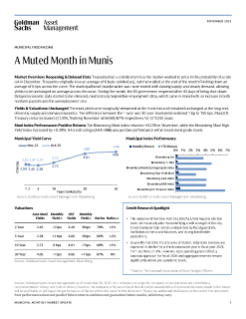Municipal Fixed Income Monthly
A Muted Month in Munis
Market Overview: Reopening & Delayed Data
Treasuries had a volatile month as the market worked to price in the probability of a rate cut in December. Treasuries originally rose an average of 6 basis points (bps), but then rallied at the end of the month finishing down an average of 6 bps across the curve. The municipal bond (muni) market was more muted with slowing supply and steady demand, allowing yields to be unchanged on average across the curve. During the month, the US government reopened after 43 days of being shut down. Delayed economic data started to be released, most notably September employment data, which came in mixed with an increase in both nonfarm payrolls and the unemployment rate.
Yields & Valuations: Unchanged
The muni yield curve marginally steepened at the front end and remained unchanged at the long end, driven by supply and demand dynamics. The difference between the 1-year and 30-year muni yields widened 1 bp to 155 bps. Muni/US Treasury ratios increased 2/1/0%, finishing November at 66/68/87% respectively for 5/10/30 years.
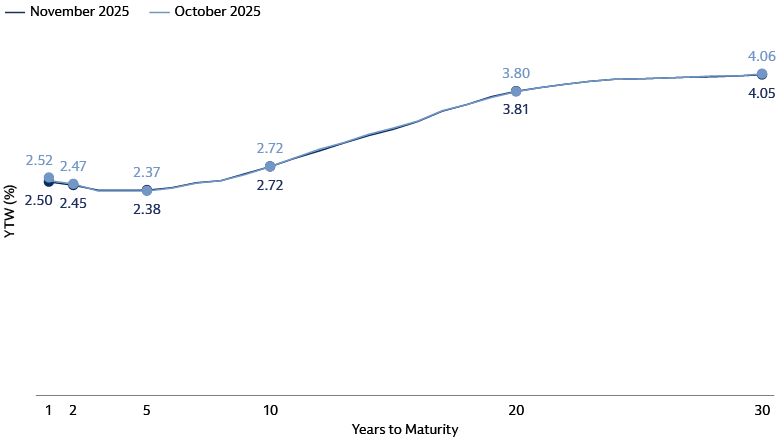
Source: Goldman Sachs Asset Management. Bloomberg. As of November 30, 2025.

Source: Goldman Sachs Asset Management. Bloomberg. As of November 30, 2025.
Muni Index Performance: Positive Returns
The Bloomberg Muni Index returned +0.23% in November, while the Bloomberg Muni High Yield Index increased by +0.39%. All credit ratings (AAA–BBB) saw positive performance within investment grade munis.
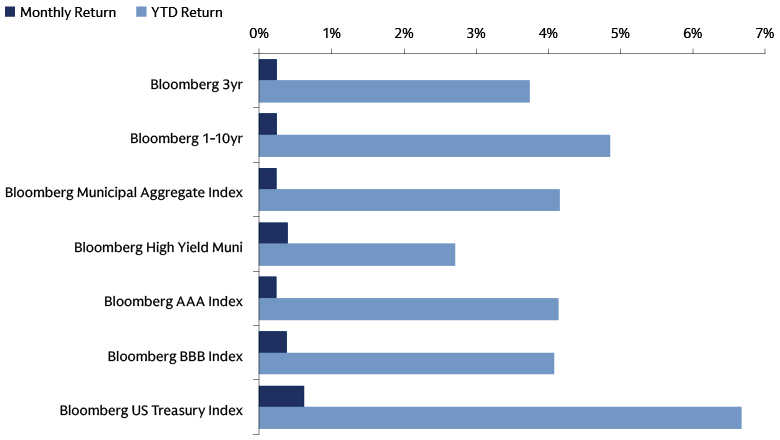
Source: Goldman Sachs Asset Management. Bloomberg. As of November 30, 2025.
Credit Research Spotlight
- The outcome of the New York City (AA/Aa2/AA) mayoral election does not materially alter the underlying credit strength of the city. Credit fundamentals remain underpinned by fiscal guardrails, institutional checks and balances, and strong bondholder protections.
- As per the Fall 2025 Fiscal Survey of States1, total state reserves are expected to decline for a third consecutive year in fiscal year 2026 from 26.5% to 21.4%. However, state spending plans reflect a cautious approach for fiscal 2026 and aggregate reserves remain significantly above pre-pandemic levels.
We are on track for a record issuance year. Even with historically lower fall redemptions, we expect consistent demand as investors extend their duration as the Fed resumes an easing cycle.
Intermediate and longer-dated munis present a fair entry point given the attractive tax-equivalent yields in these parts of the curve. Favorable absolute yields and stable credit fundamentals should support muni valuations across the curve.
Investment grade issuers remain on solid footing, boosted by healthy reserve balances. We view current credit spreads to be additive to portfolios and are focused on active credit selection to take advantage of the opportunity set.
Supply: Slowing into the Holidays
November new issue supply amounted to $38 billion ($37 billion tax-exempt and $1 billion taxable). This was 55% higher than November 2024 volumes, but 34% lower than last month. Year to date, new issue volumes are up 12% versus last year.
Weekly new issuance volumes in November ranged from $2 billion to $15 billion. November had solid issuance, driven by a few large gas prepay deals. Supply significantly dropped off in the last week of the month due to the holidays, however.
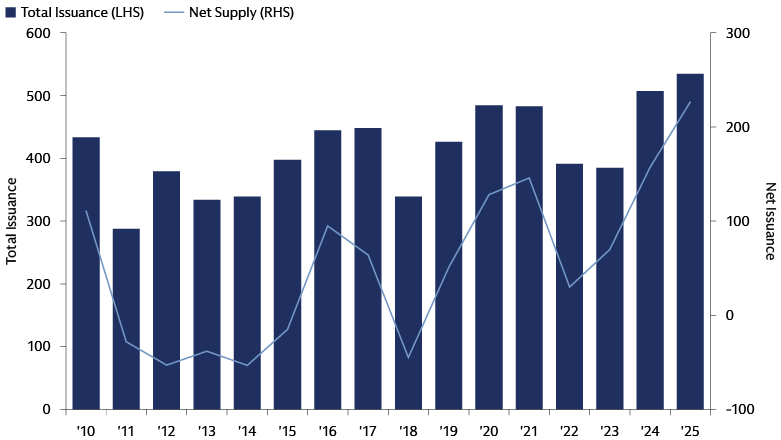
Source: Goldman Sachs Asset Management. The Bond Buyer, Barclays. As of November 30, 2025
Demand: Positive
November had positive weekly inflows for all but one week. On average, each week had $347 million-worth of inflows based on weekly reporters’ data.
November continued the trend into investment grade munis, but was spread amongst various durations across the curve. YTD fund inflows have totaled $48 billion, with most of those inflows to ETFs and investment grade munis.
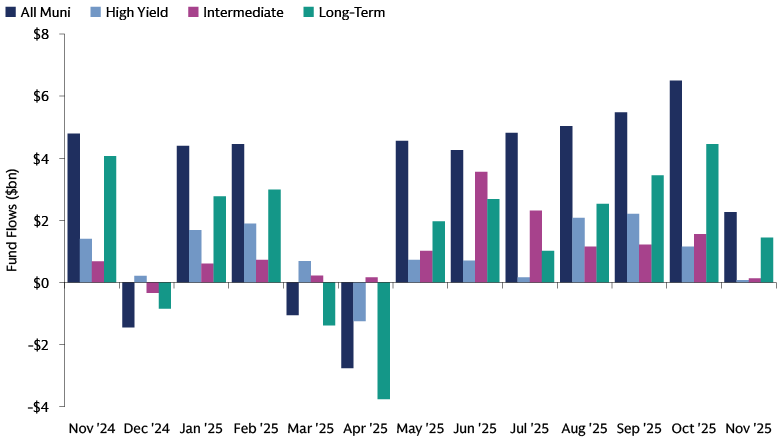
Source: Goldman Sachs Asset Management. Refinitiv. As of November 30, 2025
Spreads: Flat
Both investment grade spreads and high yield spreads were unchanged in November. Investment grade spreads remained at 105 bps and high yield spreads stayed at 206 bps.
Within high yield, the hospital and housing sectors were the most notable, gaining 0.65% and 0.52% respectively. While the tobacco sector was the biggest underperformer, -0.11% for November.
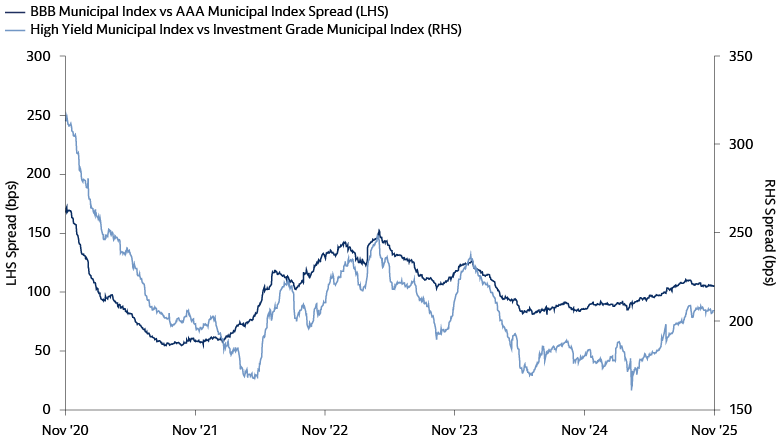
Source: Goldman Sachs Asset Management, Bloomberg. As of November 30, 2025
1 Source: The National Association of State Budget Officers
